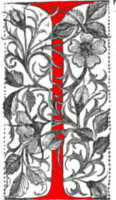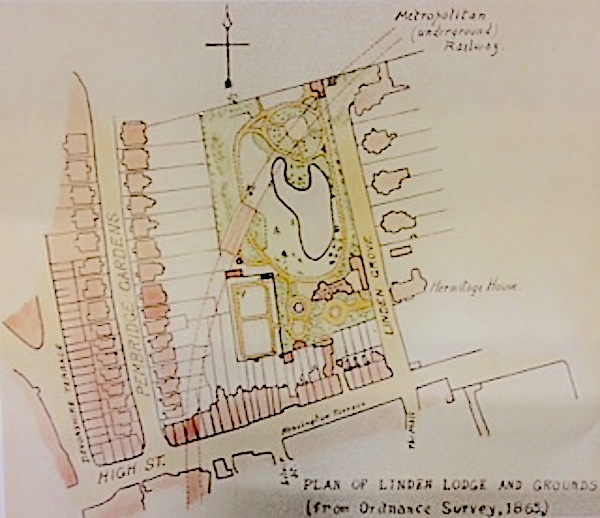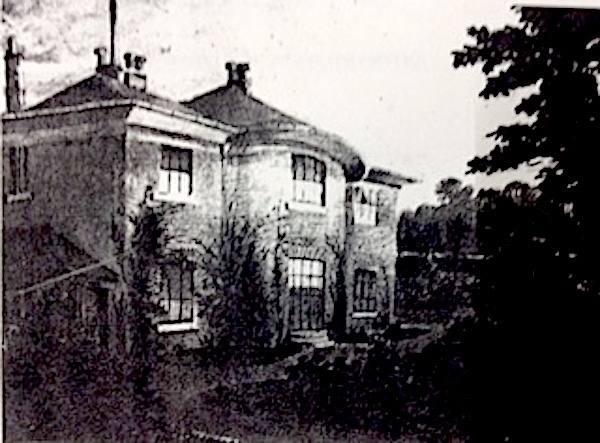
n 1827, just before William Mulready left The Mall, Augustus Callcott (1779-1844), then aged 48, married a widow, Maria Graham (née Dundas). Maria was a remarkable woman who had already made her name as an intrepid traveller in Chile and Brazil, and was now an established author with a scientific bent. She had returned to London in 1825, taking lodgings at 6 High Row in Kensington Gravel Pits, where she soon attracted Callcott’s attention.


Left: Sir Augustus Callcott, by Sir Edwin Landseer, 1833 Right: Maria, Lady Callcott, by Sir Thomas Lawrence, c. 1819.
An extended honeymoon in Europe followed which inspired Augustus to paint his landscapes in a more romantic classical style, thus earning the epithet of ‘the English Claude’. However John Ruskin had a low opinion of Callcott’s work, writing ‘he painted everything tolerably, nothing excellently.’ Back in England Maria inspired her husband to establish an artistic salon at The Mall, thus making Kensington Gravel Pits a destination for many intellectuals of the day. Callcott became Keeper of the Royal Collection in 1837, for which he was knighted; Maria died in 1842.
J.C. Horsley belonged to a younger generation: his first picture was exhibited at the RA in 1839. He had been encouraged to paint by Mulready and went on to have a long and successful career, starting with historical subjects and later turning to contemporary scenes, two of which were bought by the renowned art collector John Sheepshanks. He also had success as an illustrator and in 1840 put forward a design for the Penny Postage scheme. In 1843, at the behest of Henry Cole, he designed the first Christmas card and was also commissioned to paint some frescoes at the new Palace of Westminster. He became an RA in 1864 and later turned to art administration, being Rector of the RA from 1875 to 1890 and organising their successful series of Old Master Winter Exhibitions.
In his youth Horsley had been a good friend of Felix Mendelssohn and Isambard Kingdom Brunel who were often entertained at his father’s house at High Row. His sister Maria married Brunel in 1836, and Horsley's reminiscences contain much information about both men, as well as other notable musical and scientific contemporaries, so in this respect Augustus Callcott’s intellectual salon continued to flourish at Kensington Gravel Pits. In 1861 Horsley bought a country house at Cranbrook but always kept his main address as 1 High Row.
Meanwhile Mulready was living and working in nearby Linden Grove. Around the 1840s he changed his style of painting by adopting a white ground and luminous colours, thus anticipating the methods of the Pre-Raphaelites. John Ruskin admired these pictures, writing ‘They remain in my mind as standards of English effort in rivalship with the best masters of Holland.’ However any likeness to Pre-Raphaeliteism in their work was firmly rejected by the artistic group around Mulready, which included William Powell Frith (1819-1909) who lived nearby.


Left: Linden Grove, extract from ordnance survey map of 1865. Note the curve, across the middle, showing the track of the Metropolitan Underground Railway. Right: Mulready’s house at No 1 Linden Grove. Photographs courtesy of RBKC (the Royal Borough of Kensington and Chelsea).
The houses on the right-hand side of Linden Grove, bay windowed matching pairs, all survive except the southernmost, Mulready’s at No 1, although a photograph of his house (above) still exists. On the left hand side was Linden Lodge with a big garden; the lake in the middle is probably the remnant of a gravel pit. Nos 7 and 8 Linden Gardens (originally one house) later belonged to Thomas Creswick (1811–1869) another landscape painter. At the end of Creswick’s life he was much annoyed by the vibrations from the Metropolitan line as it passed under his garden.
Mulready lived here until his death, continuing to exhibit regularly at the RA until 1862. His sons were brought up here and all went on to become artists, although only his grandson Augustus had much success.
Mrs Panton, William Frith’s daughter, wrote in her memoirs about visiting the elderly Mulready in Linden Grove during the 1860s and being shown his designs for the penny postage, launched in 1840. She remembered him as 'a small, very neat man, very deaf, and very kind', who gave her some of his specially designed envelopes. She thought that 'he could not really have been more than seventy at the outside, but he was very bent and feeble, and had had heavy domestic trials. What they were I never quite knew', she added, 'but he lived quite alone in Linden Grove,' apparently not painting any more (88-89).
When Mulready died in 1863 the environs of Kensington had undergone a dramatic change. It was now a fully built up thriving suburb providing homes for the wealthy, as well as for the great number of artists who had flocked here. Their heyday lasted until the end of the nineteenth century, when the public’s interest in homegrown art faded as suddenly as it had begun.
John Linnell’s life followed a different trajectory. He married in 1817 and settled in Hampstead for a time but then returned to live in Bayswater. He continued to paint portraits but in 1851 moved out of London altogether, to Redhill, Surrey, where he lived with his large family for the rest of his life, concentrating on painting the landscapes he loved. In 1857, at the behest of his dealer, he painted another version of Kensington Gravel Pits, larger and with more labourers, that he hoped would be better appreciated than the earlier work which had sold for very little.

John Linnell's 1857 painting of The Kensington Gravel Pits.
This painting, now in a private collection, was purely an exercise in nostalgia as by now the gravel pits and their rural surroundings were a far distant memory. Linnell also painted fine portraits of many of his Notting Hill Gate friends, including John Varley and Augustus Callcott.
Links to Related Material
- Notting Hill Gate: A Nineteenth-Century Artists’ Enclave: I
- Longer excerpt from Cissie Panton's Leaves from a Life
- Campden Hill, Kensington: A Victorian Artists' Colony (in 6 parts with a bibliography)
Bibliography
Chavez, Lydia. "John Linnell’s Kensington Gravel Pits: A Landscape from the Edge of London." Courtauld Institute of Art. Web. 12 March 2023.
Gladstone, Florence M. Notting Hill in Bygone Days (rpt.), ed. Ashley Barker. United Kingdom: Anne Bingley, 1969.
Horsley, J. C. Recollections of a Royal Academician. London: John Murray, 1903. Internet Archive. Contributed by the University of California Library. Web. 12 March 2023.
Panton, Jane Ellen ("Cissie"). Leaves from a Life. London: E. Nash, 1908. Internet Archive. From a copy in Robarts Library, University of Toronto. Web. 1 January 2023. [Extract]
Story, A. T. The Life of Linnell. London. nd. [full text]
Wood, Christopher, Christopher Newall and Margaret Richardson. Dictionary of Victorian Painters. 2 vols. London: Antique Collectors Club, 1995.
Created 11 March 2023